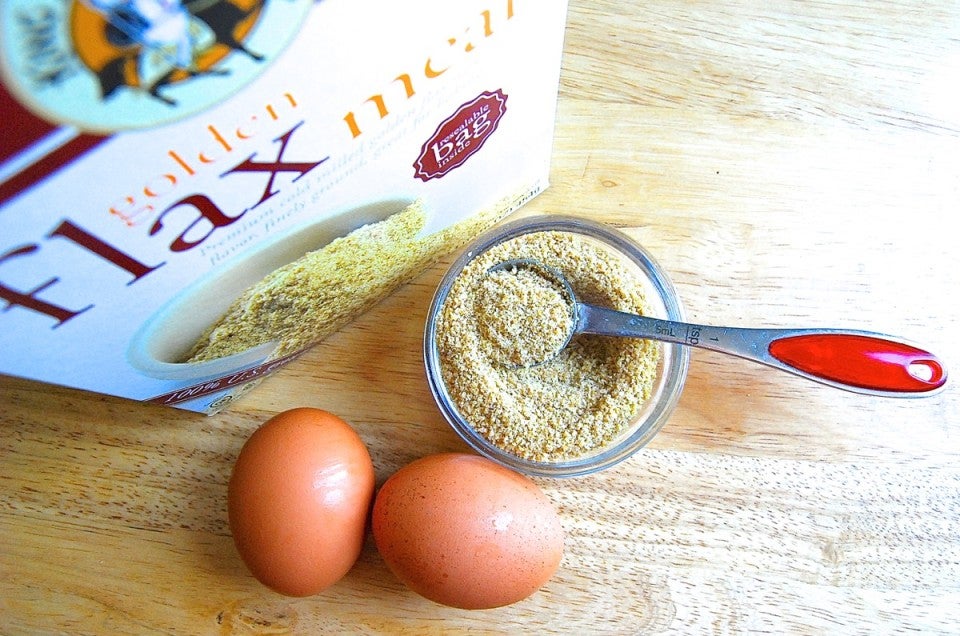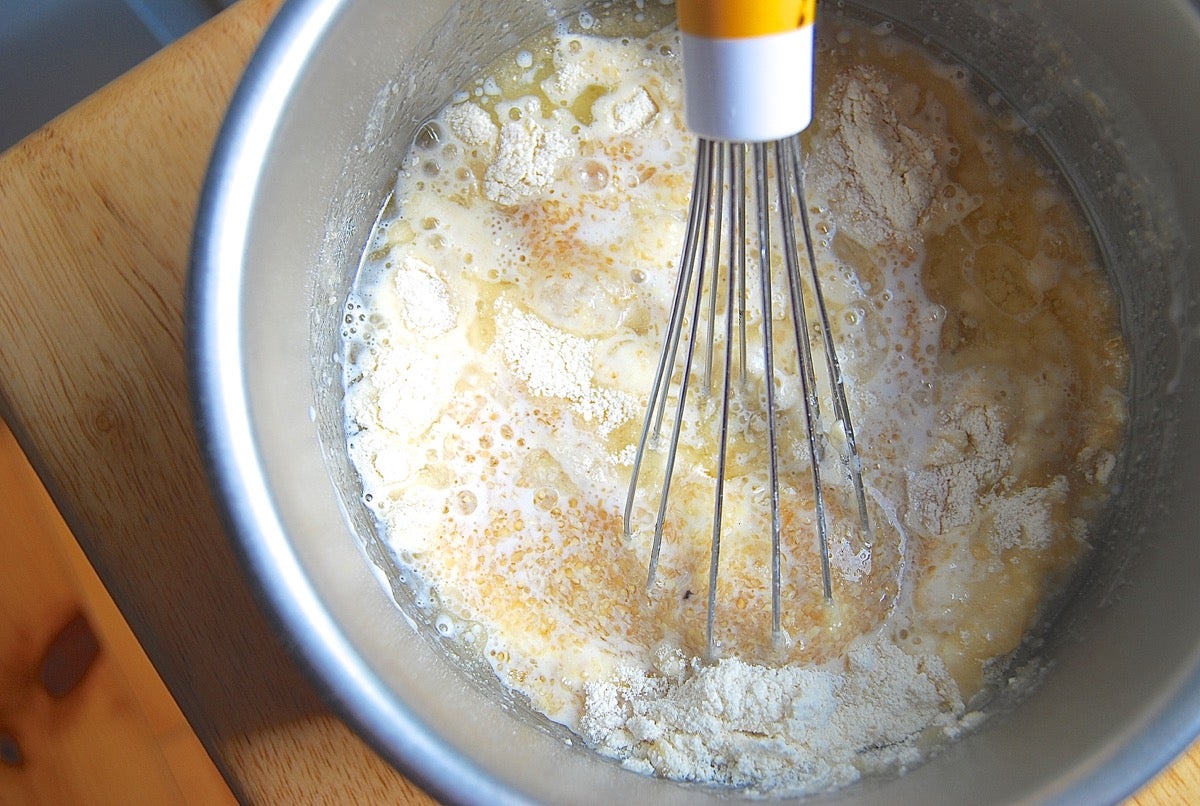


"How do I make homemade egg replacer?"
These days, with all kinds of allergies seemingly on the rise, we hear this question from our readers and customers on a regular basis.
"I'd love to make these [insert your favorite baked good], but I don't do eggs. What can I substitute?"
The answer is both simple – and complex.
Simple, because a perfectly good egg replacer is easily made from just two ingredients: flax meal, and water.
Complex, because you wouldn't want to use it in EVERY baked good calling for eggs; so you need to use both knowledge and experience to determine which recipes are suitable candidates for the flax/water fix – and which aren't.
But don't stress; we're here to help you.
First, let's make some easy homemade egg replacer.
For each large egg, stir or shake together 1 tablespoon (1/4 ounce) flax meal and 3 tablespoons (1 1/2 ounces) cold water. For multiple eggs, simply scale up: I'm making 4 eggs' worth here, which translates to 1/4 cup (1 ounce) flax meal and 3/4 cups (6 ounces) water.
Can you use brown flax meal? Sure. It'll give your baked goods stronger whole grain-type flavor; and darker color, with a definite flecked appearance.
After 10 to 15 minutes, you'll notice the flax has absorbed much of the water.
After another 15 minutes or so, it will have thickened quite a bit; give it a stir every now and then to help it along. You now have flax gel: a.k.a. homemade egg replacer.
Flax gel's final texture is something between slimy and goopy, just to put things in scientific terms. Think egg white.
And how does this homemade egg replacer work in, say, yeast bread?
Here's my favorite roll recipe, Amish Dinner Rolls. These dense, tender potato rolls stay nice and soft for several days at room temperature. The recipe calls for 2 eggs – a fairly average amount, if you're talking yeast bread that includes eggs.
The rolls on the left are made with flax gel; on the right, with egg. See the difference? The flax gel rolls sport tiny brown flecks on their surface.
On the left, flax gel rolls – again, notice their subtly darker color. But their taste is identical to rolls made with real egg.
Verdict: You wouldn't use this substitution in egg-heavy breads, like brioche; these breads rely on egg for both color and richness. But for a typical sandwich loaf or buns? Go for it.
Think pancakes, as I'm making here (from our tasty buttermilk pancake & waffle mix). Or soft (not crunchy) cookies, or bars. So long as you're simply replacing the eggs' liquid, and their rich "mouth feel" – not their structure-building protein – homemade egg replacer should be a good substitute.
And speaking of mixes, I suspect homemade egg replacer would work well in many store-bought mixes, which are formulated to be pretty "goof proof." Mix manufacturers know that lay bakers will substitute all manner of different ingredients for something they may not have, so the mixes themselves come with all kinds of built-in safeguards against failure.
My pancake batter was definitely elastic, rather than easily pourable. When I was making the pancakes, I needed to coax them into rounds on the pan, as they wouldn't spread much by themselves.
Again, think what it would be like if you dropped an egg white into a hot pan; the texture of batters made with homemade egg replacer are almost identical to that of an egg white.
Finally, what about using homemade egg replacer in gluten-free baked goods? Many folks eating gluten-free are also avoiding eggs.

I wish I could tell you to substitute homemade egg replacer in any and all of your gluten-free recipes calling for eggs. But this is where things become problematic: eggs usually play a major structure-building role in gluten-free baking.
Wheat flour adds structure and strength to baked goods via its protein-based gluten. Replace wheat flour with gluten-free flour, and you need to replace the "structure builder" – and the replacement is usually protein-rich eggs.
Our recipe for Gluten-Free Brownies calls for 3 large eggs, and just 3/4 cup gluten-free flour; clearly, it's eggs that are building structure. So what happens when you substitute homemade egg replacer?
You get brownies that are noticeably moister than those made with eggs. Actually, I preferred these super-moist flax gel brownies to the ones made with eggs; the caveat to that being, I LOVE super-moist, super-dense brownies.
Would homemade egg replacer work in gluten-free pancakes, or soft cookies, or other types of bars? I think so.
But for anything that needs to rise more than an inch or so, I'd guess real eggs, providing the needed structure gluten-free flour can't, are a necessity.
One final note: Varying amounts of flax gel egg replacer (ranging from 1 3/4 ounces to 3 1/2 ounces) can be used to replace each egg in your recipe. The directions that come with the flax meal we sell call for replacing each egg with the smaller amount of flax gel. Personally, I prefer to replace each large egg with 3 1/2 ounces flax gel, for the added moistness this amount delivers.
If you're vegan (or baking for someone who is!) see our collection of vegan desserts, which not only skip the eggs but also the dairy. Happy baking!







